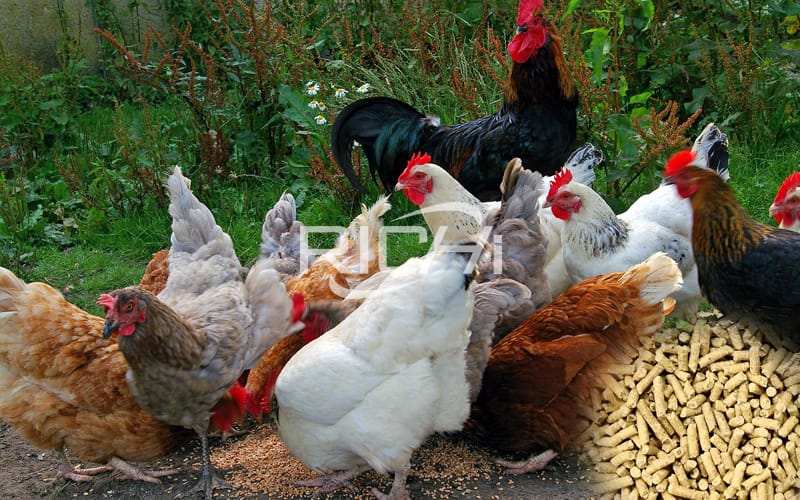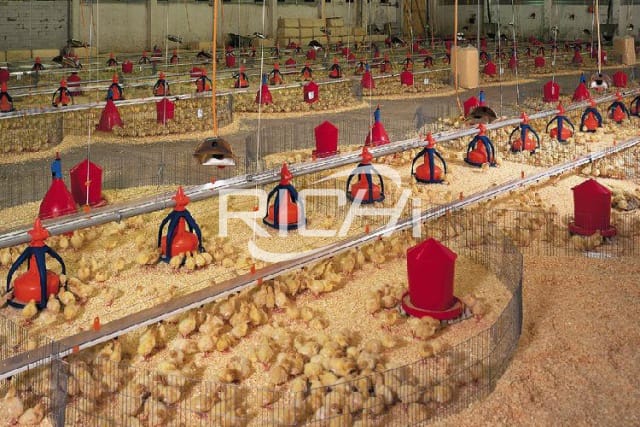The most easily missed link in broiler breeding management
Raising chickens is a delicate task, especially broiler chickens, which will be released for slaughter in just a few dozen days. Therefore, no errors are allowed during the entire breeding process. Even if there is a mistake in feeding management, it will have an impact on the final production performance, such as increased feed-to-meat ratio, substandard weight, increased rate of dead hunting, uncontrollable disease, and even forced to market early, etc., which will eventually lead to direct breeding failure. Affect economic benefits.
Therefore, it is necessary to continuously summarize experience and learn lessons during the breeding process. In actual operation, try to be as reasonable and accurate as possible to minimize the risk of breeding.
How to operate the specific feeding management? Based on years of experience, RICHI summarized some of the most easily missed details of chicken raising, and shared with you.

1. Poor temperature control
There are two cases of poor temperature control, one is the temperature is too low, and the other is the temperature is too high.
Generally, the temperature is relatively low, and the temperature is relatively high in most cases. Many people think that higher temperature chickens are easier to raise, so each time the brooding room temperature is raised to 35°C~36°C, or even higher. In fact, such a high temperature is not needed. After long-distance transportation, the chicks have already shown slight symptoms of dehydration. After entering the brooding room, they need to have a certain adaptation time. If they encounter high temperature as soon as they enter the brooding room, this is for the chickens. The group is a kind of intense stress, which can easily cause some chicks to become more dehydrated. Therefore, it is recommended that before the chicks enter the brooding room, the temperature in the brooding room should be controlled at about 30°C. After the chickens have entered the brooding room, the temperature should be gradually increased until the chickens are completely dispersed and adapted to the temperature in the brooding room. Then keep the temperature constant at this level.
Of course, low temperature in the brooding room is also not acceptable, it will cause severe chick umbilical inflammation, pullorum, malabsorption or non-absorption of yolk. In short, the brooding stage is very important, and poor management will affect the life-long growth of the chicken.
2. Unreasonable ventilation
The common manifestations of unreasonable ventilation include fear of ventilation and chaotic ventilation. The most common thing is that the farms do not dare to ventilate, especially in the early stages of the feeding cycle. Many people think that the chickens are young and afraid of cold. Or think that the environment in the chicken house is acceptable and no ventilation is needed. But this will lay hidden dangers for the later ventilation work. Don't dare to ventilate in the early stage. If the chickens are more than 20 days old and the air quality in the house is poor or the indoor temperature needs to be lowered for ventilation, if the ventilation is too large, the chickens will show discomfort, and in severe cases, a cold will occur. The phenomenon. If the ventilation volume is too small and the effect of improving air quality is not achieved, the chickens will still have respiratory problems.
Richi Machinery recommends that (especially in a closed chicken house) the chicks should be ventilated slowly on the first day (no more than 4 days at the latest) when they enter the brooding room. The purpose of ventilation is to keep the air in the chicken house fresh and sufficient oxygen. . It is necessary to allow the chickens to adapt to ventilation as early as possible while maintaining the proper temperature of the chickens. In this way, when they are more than 20 days old and need to increase the amount of ventilation, the chickens can adapt and rarely catch colds.
There is also chaotic ventilation. No matter how the chickens are, they just use their imagination and feelings to open windows and fans at will. Such management methods are not advisable.
3. Poor humidity control
The humidity problem is more difficult to master than ventilation. As the current breeding equipment is more advanced, most of them are supplied by hot air stoves. The temperature required during the brooding period is high, so the hot air stoves work continuously, resulting in dryness in the house and insufficient humidity. This will have an impact on the respiratory system of the chickens, especially the lungs, which are afraid of heat and dryness. Therefore, high temperature and dryness will damage the lungs and cause later pneumonia and air sacculitis. There are also high humidity, especially in the winter when the chicken house is closed and the moisture cannot be discharged. The walls and roof are all fine water droplets, which will cause enteritis, colibacillosis, arthritis, and staphylococcal disease in the flock. And other diseases.

4. Excessive dependence on equipment
Some farms have a lot of investment and advanced equipment, but the chickens are still not well raised. The main reason is that it relies too much on equipment and ignores human factors. For example, ventilation. After adjusting the fan and vents and setting the time control, it is assumed to be in place, instead of observing the status of the chickens frequently. If the weather changes or the fans stop, the chicken house will become stuffy (especially It’s the latter half of the night) The air is not circulating. Another example is feeding and feeding. When the button is pressed, the automatic feeding machine starts slowly, so you can rest assured. If you can't finish eating in some places, or don't eat enough in some places, you need to artificially mix them, otherwise the chickens will have different sizes of individuals, which will lead to gastroenteritis.
In addition to these two situations, there are actually many situations, such as relying on a thermometer, relying on a negative pressure meter, etc., I won't repeat them here. In short, while the farm uses advanced equipment, it cannot rely solely on the equipment to be lazy. Instead, it must be more diligent in order to achieve foolproof feeding and management.
5. Unreasonable medication
When it comes to medications, some people are reluctant to use them. In order to reduce costs, they try to buy cheap drugs. Some people do not count the cost, as long as they hear that it is a good medicine, they use it regardless of the situation. Some people are fond of western antibacterial drugs, some are superstitious in Chinese medicine, and micro-ecological preparations.
Drugs can be life-saving when used well, but it will be fatal when used badly. When we are breeding, we must use drugs rationally and not go to extremes. This must be based on the breeding environment, disease prevalence, the state of the chickens, and the pharmacological effects of drugs, and make reasonable arrangements.
[More related information about broiler pellet feed and breeding skills]
chicken feed making machine in kenya
10t/h automatic complete broiler chicken feeds plant
how to manufacture chicken feeds?
Factory price boiler feed making machine
Broiler chicken feed pellet formulas
Broiler breeding technology in plastic shed
If you want to built one complete pellet production line in your country, pls send the inquiry to us. We will customized design according to your requirement.



